|
| |
FAMILY VESPIDAE
- This page contains pictures and information about Yellow Potter Wasps that we
found in the Brisbane area, Queensland, Australia.
-
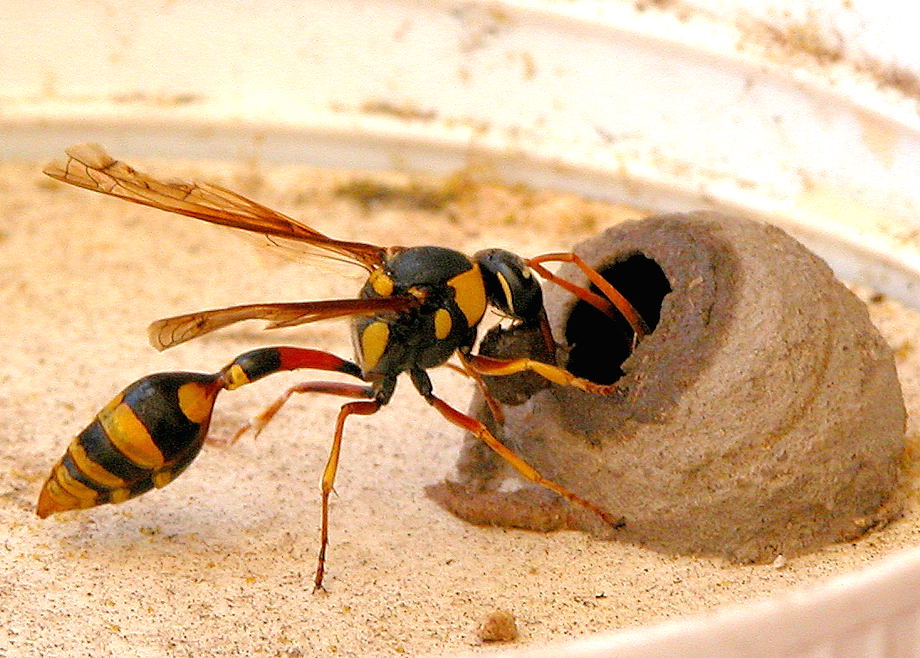 - Female building nest, body length 22mm
-
- This Yellow Potter Wasp may be looked similar to the Mud-Dauber
Wasp. They also build mud nest outside our house but they build mud nest with different shape. They are
solitary wasps. They are also common around Brisbane. The Yellow and Black Potter
is dark brown to black in colour, with yellow banded abdomen. There is yellow pattern on their thorax.
Their waist is long and narrow.
-
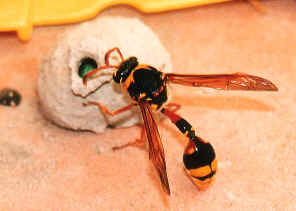 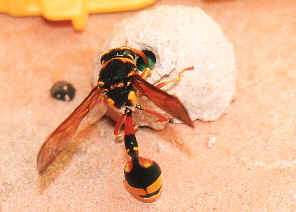 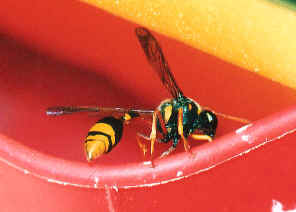 -
- The Yellow Potter Wasps build jug shape mud cells in sheltered locations. Female wasp
builds the nest, then collects three to four medium size hairless caterpillars (20-30mm) and
put them inside the nest. Then she lay an egg in the nest. (Or lays
eggs first before collecting caterpillars?)
-
- The female wasp finds those caterpillars amongst near by plants, paralyzes
them and put them inside the mud cell. The wasp stings the caterpillars to
paralyze them. The egg hatches and the larva feed on those caterpillars. The
female wasp lays one egg in each cell before sealing it.
-

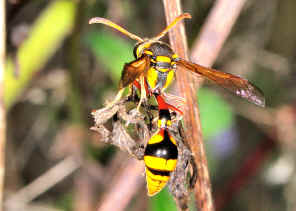
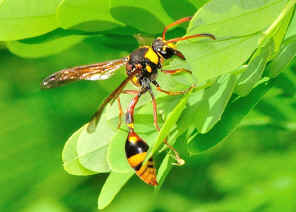
-
- At night, the wasp does not rest near the near the mud pot, instead it
rests on grass top after sun set., and resumes its job the other day. Details
please check our records below.
-
Males Yellow Potter Wasps
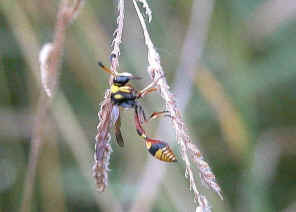 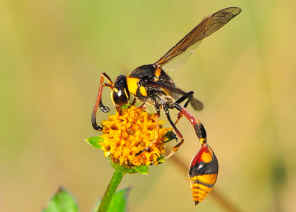
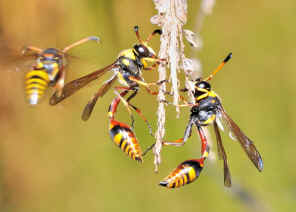
-
- Males and females looked very similar. They are distinguished by male has
five abdomen bends while female has four. Only the females build nests and
provision the cells.
-
The Mud Pot Nest
 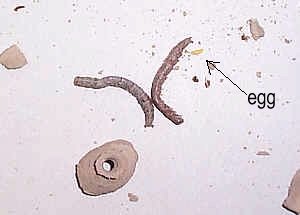 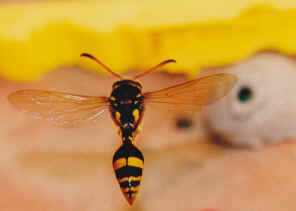 - Pot diameter 15mm
-
- We opened one cell and found some small caterpillars (20mm)
and a creamy yellow egg (3mm) inside. We try to raise the wasp but without success.
The egg turned into larva and fed on the caterpillars. However, the larva dead
after a few days. We might try again if we found another one.
-
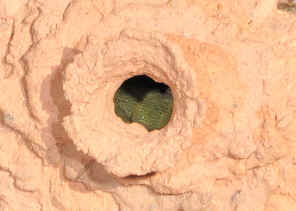
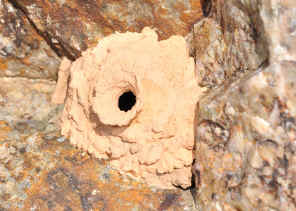
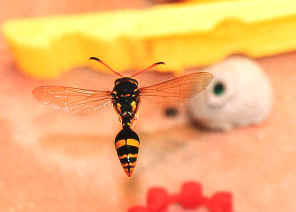 -
-
- This Yellow and Black Potter Wasp is not as popular as the Mud-Dauber
Wasp in our
area, although their nests are not difficult to be found.
- Those female Potter Wasps like to build mud pots on the table outside our
backyard, where is an open area but under cover, protected from sun, wind and rain.
Every year on early summer there were some pots built there.
-
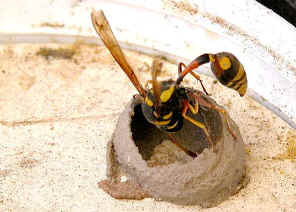 
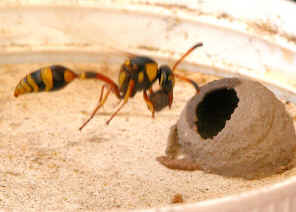 -
- The wasp found some damp mud
near by. She collected the mud, formed a small mud
ball about 2mm diameter, then brought it back to the pot site.
-
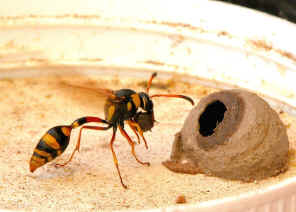
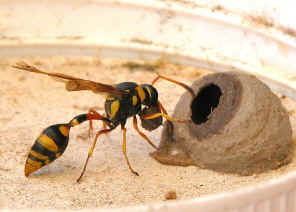
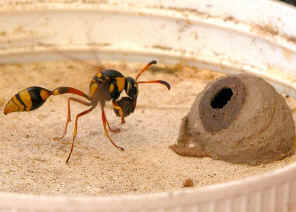 -
- Each trip she
brought back a little mud ball. There is about five minutes between each trip. It
took her half a day to build a pot.
-
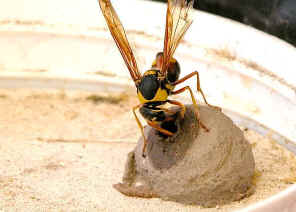 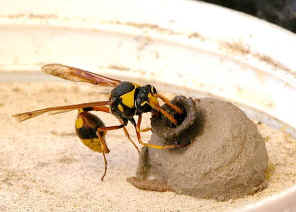
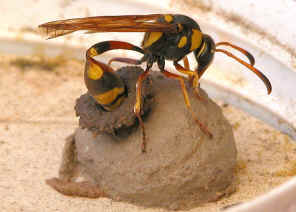 -
- She used her mouth and front pair of legs to carry the mud. She laid the
mud mainly by her mouth, then checked with her antennae. The pot was
dome-shaped, about 15mm in diameter. At the top about 45 degree, she made a bottleneck-shaped
entrance. The pot was about finished. The last procedure was she laid a white
substance covered the inter wall of the pot. This might help to strengthen the
wall.
-
- After the pot was ready, the wasp started to find caterpillars and put
inside the pot. She might find three to four caterpillars for each pot. Then
she laid an egg in the pot. Finally, she remove the bottle neck and closed the
entrance. This pot was done. The wasp found another site and built another pot.
- At night, the wasp does not rest near the near the mud pot, instead it
rests on grass top after sun set., and resumes its job the other day.
-

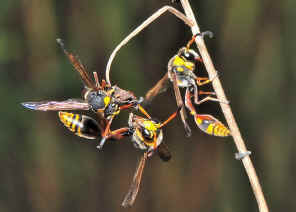
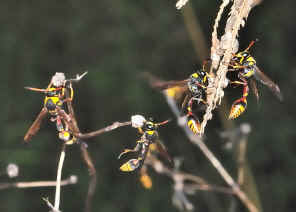 -
- Potter Wasps rest on grass stem after sunset. Sometimes other Hymenoptera
wasp and bee species are found resting together on the same grass stem in a
small area. Those species we found include the Blue-banded
Bees and other Eumeninae wasps.
-
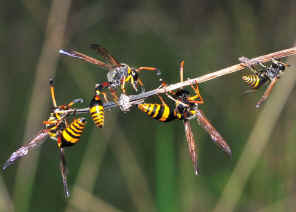
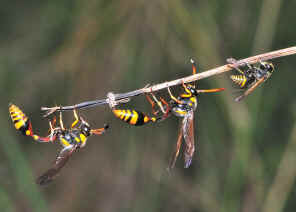
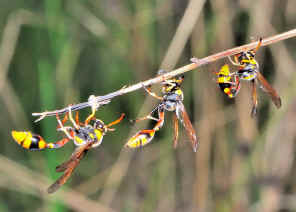 -
- Just before sunset, many wasps and bees can be seen
gathering together in a small area. Those area is usually an open area with
tall grasses. The wasps and bees start resting on grass stems. The wasps find a good position to rest for the whole night,
where usually the stand alone tallest grass in the area. The favorite spot
becomes quite crowded. Sometimes the wasps may have body contact but there are
not any conflict. The occupancies will move a bit to give some space for the
new comers.
-
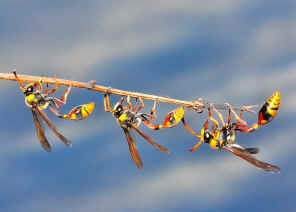
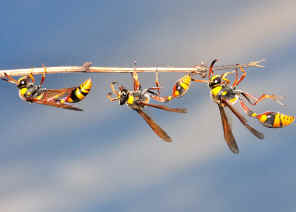
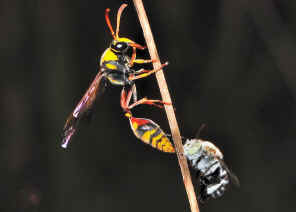 -
- Unlike the Blue-banded
Bees, which females rest in the under ground nest and only males rest in
group on grass stem. Both Potter Wasp males and females rest on grass
stem during the night. In the above pictures there are the males and females.
-

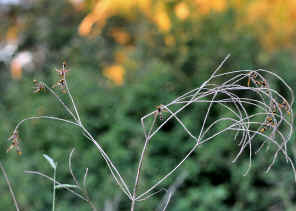
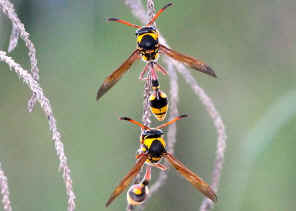 -
- This Yellow Potter Wasp species is common in Brisbane.
-
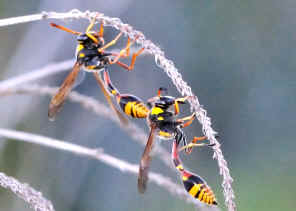
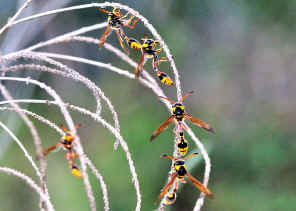
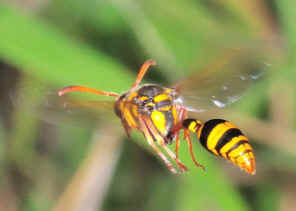 -
- Reference:
- 1. Delta campaniforme - Insects of Townsville, Australia - Graeme Cocks.
- 2. Species
Delta campaniforme (Fabricius, 1775) - Australian Faunal Directory, Australian Biological Resources Study.
- 3. A
field guide to insects in Australia - By Paul Zborowski and Ross
Storey, Reed New Holland, 1996, p191.
[ Up ] [ Yellow Potter Wasp ] [ Brown Potter Wasp ] [ Orange Potter Wasp ] [ Large Mud-nest Wasp I ] [ Large Mud-nesting Wasp II ] [ Black-headed Potter Wasp ] [ Black Mud-nesting Wasp II ] [ Black Mud-nesting Wasp II ] [ Fire-tailed Potter Wasp I ] [ Fire-tailed Potter Wasp II ] [ Fire-tailed Potter Wasp III ] [ Brown Mason Wasp ] [ Black Mason Wasp ]
| |
|

































